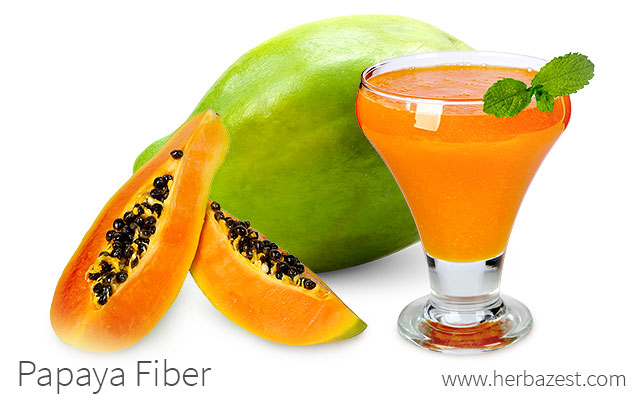Alongside a rich store of other vitamins and minerals that round up papaya nutritional value, fiber is an important health-regulating substance, supporting many of the body's natural functions and even being implicated in the prevention of several major diseases.
What is Fiber?
Fiber not only prevents constipation, but also has an hypoglycemic action, lowering blood sugar and increasing satiety, which aids in weight control. To know more read What's the Difference between Soluble and Insoluble Fiber?
Fiber is a carbohydrate-like plant substance that adds bulk to the diet and offers a feeling of fullness that helps to suppress appetite for effective weight management. Found in a variety of fruits, veggies, nuts, whole grains, and seeds, fiber supports healthy digestion by transporting food efficiently through the digestive system, thus ensuring regular bowel movements.
Dietary fiber is classified into two specific types, each with their own health benefits. Soluble fiber retains water and slows down the process of nutrient absorption. It has been linked to lowered cholesterol levels. Meanwhile, insoluble fiber speeds up the process of digestion, adding bulk to the stool. It has been associated with the prevention of cardiovascular disease in high-risk patients. Papaya is high in soluble fiber, which makes it an ideal fruit for people with metabolic disorders.
Papaya's Fiber Content
About 1.7 grams per 100-gram serving is how much fiber is in papaya. With the suggested intake set at around 25 grams daily, this means that eating a small, mango-sized papaya fruit could provide as much as 7 - 10% of the daily recommended value.
Comparable to the flavor of fresh papaya, some melon varieties, such as cantaloupe and honeydew, have sweet and similarly-tasting pulps, but just half of papaya's fiber content per 100 grams (0.9 and 0.8 grams, respectively). Avocados, for their part, contain almost four times the amount of fiber (6.7 g). However, they are also high in fatty acids, which make them a calorie-dense food, and their rich taste is slightly less versatile than that of the papaya fruit, which is often used in pies, custards, jams, veggie salads, and tropical beverages.
Another thing that sets papayas apart from other fruits that are high in fiber is their concentration of the digestive enzyme papain, which works alongside papaya's fiber content for optimal gastrointestinal support.
WHILE RIPE PAPAYA IS RICH IN DIETARY FIBER, GREEN PAPAYA IS HIGHER IN PAPAIN CONTENT.
In order to make the most of its dietary fiber, is recommendable to eat a ripe papaya, sliced, alone, or in salads with other fruits. A key component of papaya, fiber exercises many important functions in the body, from supporting the digestive system to preventing conditions like diabetes, high cholesterol, and heart disease. For all these reasons, fiber-rich papaya fruit is an excellent addition to any well-balanced meal plan.
Sources
- Academy of Nutrition and Dietetics, What is Fiber?
- American Hearth Association, Whole grains and fiber
- National Library of Medicine, Dietary fiber | Soluble and insoluble fiber
- University of Hawaii, Nutrition facts
- USDA Nutrient Database, Papayas, raw | Avocados, raw, all commercial varieties | Melons, cantaloupe, raw | Melons, honeydew, raw




